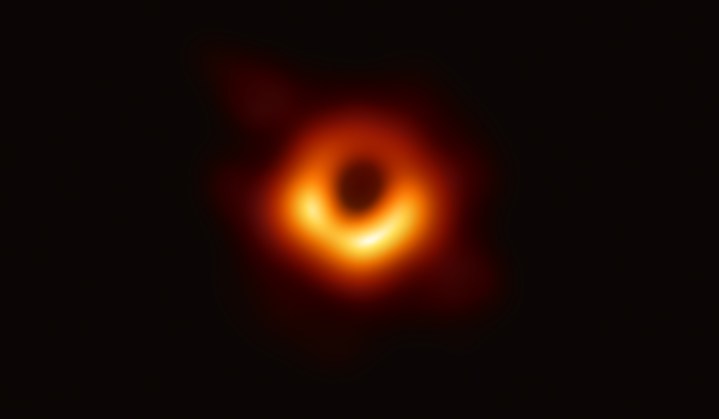
An international team of scientists that captured the first-ever image of a black hole has bagged a $3 million prize for its efforts.
The win was announced this week by the Breakthrough Prize as part of an annual awards event dubbed “the Oscars of science.” Recognizing major achievements in the scientific arena, the Breakthrough Prize was founded in 2012 by giants of the tech industry, among them Facebook’s Mark Zuckerberg, Google’s Sergey Brin, and Alibaba’s Jack Ma.
For its image of the black hole, the Event Horizon Telescope (EHT) team received the top award in the Fundamental Physics category.
The $3 million prize will be shared among the 347 EHT scientists from 20 countries who worked on the project that led to the release of the image in April 2019.
We’re pleased to announce that the @ehtelescope collaboration has won the 2020 Breakthrough Prize in Fundamental Physics. Congratulations to the entire team, across 60 institutions and 20 countries. https://t.co/LzL5M8SmEp https://t.co/k2Am4snPnN
— Breakthrough (@brkthroughprize) September 5, 2019
A black hole forms when a star collapses at the end of its life. The almighty gravitational pull that results prevents anything — including light — from escaping. The winning image shows a black hole at the center of the Messier 87 galaxy some 55 million light years from Earth. It’s this distance and lack of light that made it such a challenge to capture.
The EHT team spent years working to build an Earth-sized virtual telescope with unprecedented sensitivity and resolution for capturing the image. The Event Horizon Telescope Array, as it’s called, comprises eight telescopes located in Arizona, Hawaii, Spain, Chile, Mexico, and Antarctica.
“By synchronizing each telescope using a network of atomic clocks, the team created a virtual telescope as large as the Earth, with a resolving power never before achieved from the surface of our planet,” the foundation said on its website.
“After painstakingly analyzing the data with novel algorithms and techniques, the team produced an image of this galactic monster, silhouetted against hot gas swirling around the black hole, that matched expectations from Einstein’s theory of gravity: a bright ring marking the point where light orbits the black hole, surrounding a dark region where light cannot escape the black hole’s gravitational pull.”
“Amazing feeling”
After learning of the prize, Shep Doeleman, EHT director and an astrophysicist at Harvard University in Cambridge, Massachusetts, said: “Two decades ago, we set out to see the unseeable and it paid off in spectacular fashion,” adding, “It’s an amazing feeling to be given this award.”
Winners across the categories will receive their Breakthrough Prize awards at a special event at NASA’s Ames Research Center in Mountain View, California, in November 2019.
Editors' Recommendations
- Stunning image shows the magnetic fields of our galaxy’s supermassive black hole
- This peculiar galaxy has two supermassive black holes at its heart
- Machine learning used to sharpen the first image of a black hole
- ‘Closest black hole’ isn’t actually a black hole, but a stellar vampire
- Small, sneaky black hole discovered outside our galaxy using new method


